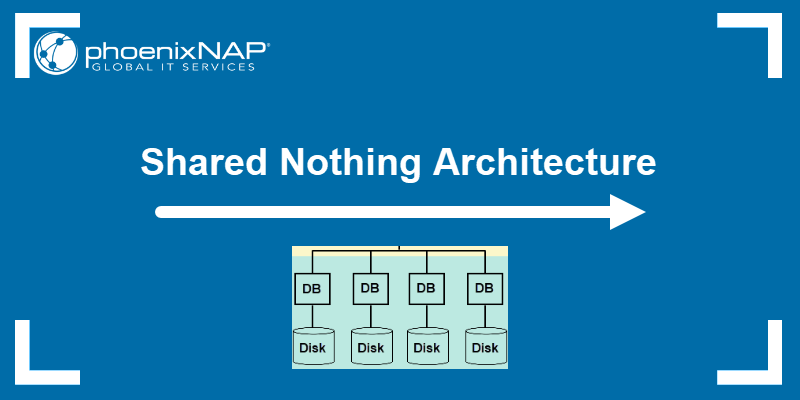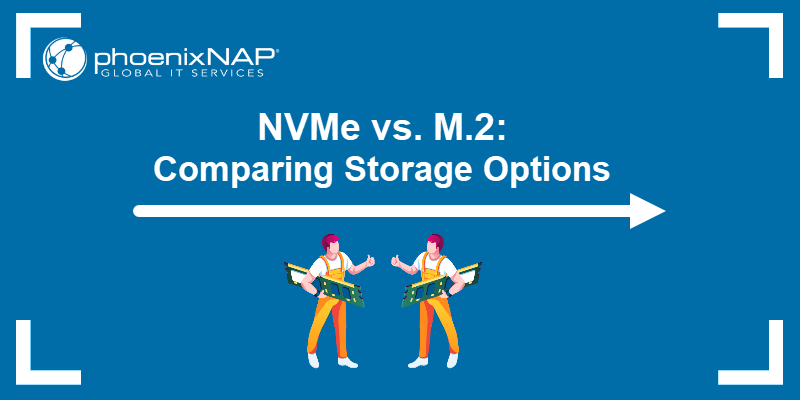The x86 and x64 architectures are the two most widely used instruction set architectures (ISAs) developed by Intel and AMD. An ISA specifies the behavior of machine code and defines how the software controls the CPU.
In this article, you will learn the difference between the x64 and x86 architectures.
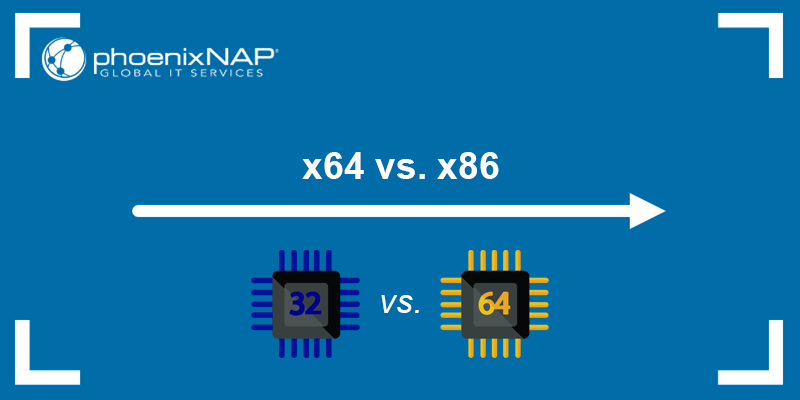
What is x86 Architecture?
x86 is an ISA for computer processors originally developed by Intel in 1978. The x86 architecture is based on Intel's 8086 (hence the name) microprocessor and its 8088 variant. At first, it was a 16-bit instruction set for 16-bit processors, and later it grew to 32-bit instruction sets.
The number of bits signifies how much information the CPU can process per cycle. For example, a 32-bit CPU transfers up to 32 bits of data per clock cycle.
Due to its capability of running on almost any computer, from laptops, home PCs, and servers, x86 architecture has become popular among numerous microprocessor manufacturers.
The x86 architecture's most significant limitation is its maximum RAM capacity of 4096 MB. Since the total number of supported combinations is 2^32 (4,294,967,295), the 32-bit processor has 4.29 billion memory locations. Each location stores one byte of data, totalling approximately 4GB of accessible memory.
Today, the term x86 denotes any 32-bit processor capable of running the x86 instruction set.
Note: After choosing the right infrastructure, learn the difference between a single and dual-core processor server and meet your organization's demands.
What is x64 Architecture?
x64 (short for x86-64) is an instruction set architecture based on x86, extended to enable 64-bit code. It was first released in 2000, introducing two modes of operation: 64-bit mode and compatibility mode, which allow users to run 16-bit and 32-bit applications.
Since the entire x86 instruction set is implemented in x64, older executables run with practically no performance penalty.
The x64 architecture supports much greater amounts of virtual and physical memory than the x86 architecture, allowing applications to store large amounts of data in memory. Additionally, x64 increases the number of general-purpose registers to 16, providing additional functionality.
The x64 architecture can utilize a total of 2^64 bytes, equaling to 16 billion gigabytes (16 exabytes) of memory. The much greater resource utilization makes it suitable for powering supercomputers and machines that need access to vast resources.
The x64 architecture allows the CPU to process 64 bits of data per clock cycle, much more than the x86 one.
x86 vs. x64
While both architecture types are based on the 32-bit set, some key differences make them suitable for different uses. The main difference between them is the amount of data they can handle with each clock cycle and the processor's register width.
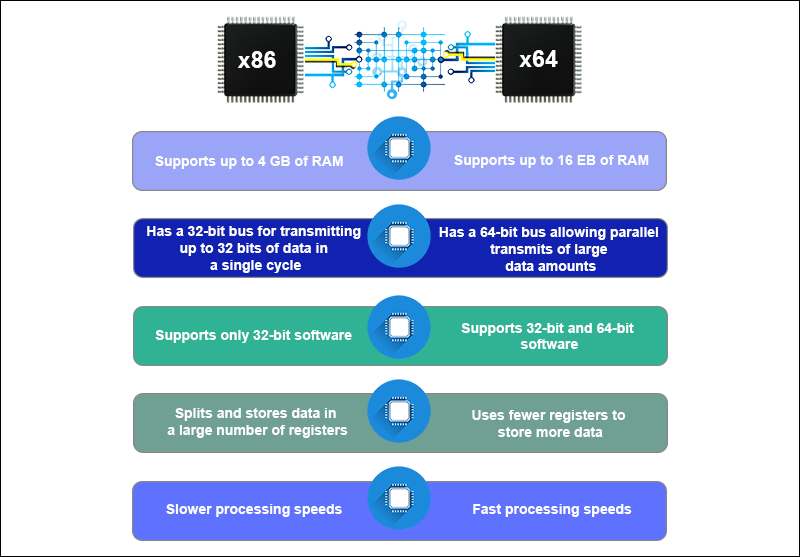
The processor stores frequently used data in a register for quick access. A 32-bit processor on the x86 architecture has 32-bit registers, while a 64-bit processor has 64-bit registers. Thus, x64 allows the CPU to store more data and access it faster. The register width also determines how much memory a computer can use.
The following table shows an overview of the key differences between the x86 and x64 architecture sets:
| ISA | x86 | x64 |
|---|---|---|
| Initial release | Introduced in 1978. | Introduced in 2000. |
| Creator | Intel | AMD |
| Origin | Based on the Intel 8086 processor. | Created as an extension of the x86 architecture. |
| Bit amount | 32-bit architecture. | 64-bit architecture. |
| Addressable space | 4 GB. | 16 EB. |
| RAM limit | 4 GB (actual usable RAM 3.2 GB). | 16 billion GB. |
| Speed | Slower and less powerful compared to x64. | Allows high-speed processing of large sets of integers; inherently faster than x86. |
| Data transmission | Supports parallel transmissions of only 32 bits via a 32-bit bus in a single go. | Supports parallel transmissions of larger chunks of data via the 64-bit data bus. |
| Storage | Utilizes more registers to split and store data. | Stores large amounts of data with fewer registers. |
| Application support | No support for 64-bit apps and programs. | Supports both 64-bit and 32-bit apps and programs. |
| OS support | Windows XP, Vista, 7, 8, Linux. | Windows XP Professional, Windows Vista, Windows 7, Windows 8, Windows 10, Linux, Mac OS. |
Note: See how a CPU compares to a GPU.
Features
Each architecture set has features that define it and give it an edge in specific use cases. The following lists showcase the features of x64 and x86:
x86
- It uses a complex instruction set computing architecture (CISC).
- Complex instructions require multiple cycles to execute.
- x86 has more registers available but less memory.
- Designed with fewer pipelines, but it can handle complex addresses.
- System performance is optimized using the hardware approach: x86 relies on physical components to compensate for limited memory.
- Uses software-based DEP (Data Execution Prevention).
x64
- Has 64-bit integer capability with backward compatibility for 32-bit applications.
- The (theoretical) virtual address space amounts to 2^64 bytes (16 exabytes). However, only a small portion of the theoretical 16-exabyte range is currently used in real life - about 128 TB.
- x64 processes large files by mapping the entire file into the process's address space.
- Faster than x86 due to its faster parallel processing, 64-bit memory and data bus, and larger registers.
- Supports simultaneous operation of large files on multiple address spaces. Additionally, x64 emulates two x86 tasks simultaneously, providing a faster experience than x86.
- Loads instructions more effectively and efficiently.
- Uses hardware-backed DEP (Data Execution Prevention).
Applications
Due to their different features and differences in resource access, speed, and processing power, each architecture set is used for different purposes:
x86
- Many of the world's PCs still run x86 operating systems and CPUs.
- Used for gaming consoles.
- Cloud computing segments still use the x86 architecture.
- Older applications and programs usually run on a 32-bit architecture.
- It is better for emulation.
- 32-bit is still preferred in audio production due to its compatibility with older audio equipment.
x64
- An increasing number of PCs use 64-bit CPUs and x64-based operating systems.
- All modern mobile processors use the x64 architecture.
- It is used to power supercomputers.
- Used in video-game consoles.
- Virtualization technologies are based on the x64 architecture.
- It is better suited to newer game engines, as it is faster and provides better performance.
Limitations
While both ISAs have limitations, x64 is a newer, more refined architecture. Below is a list of limitations of both types of architectures:
x86
- It has a limited pool of addressable memory.
- Processing speeds are lower than with x64.
- Vendors no longer develop applications for 32-bit operating systems.
- Modern CPUs require a 64-bit OS.
- All devices on the system (video cards, BIOS, etc.) share the available RAM, leaving even less memory for the OS and applications.
x64
- It does not run natively on older legacy devices.
- Its high performance and speed usually consume more power.
- 64-bit drivers are unlikely to become available for older systems and hardware.
- Some 32-bit software isn't fully compatible with 64-bit architecture.
How to Check if Your Computer is x64 or x86?
If you own a PC purchased in the last 10-15 years, it likely runs on x64 architecture. Follow the steps below to check if your PC is 32-bit or 64-bit:
Step 1: Open Settings
On Windows 10, press the Windows key and click the Settings icon.
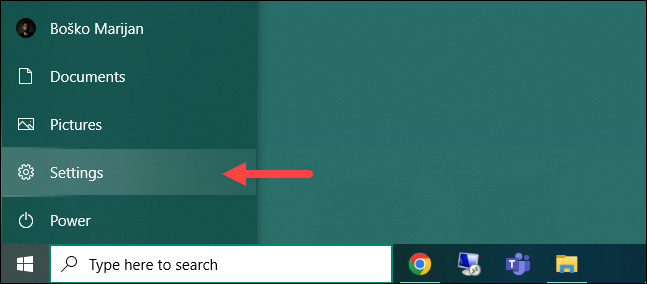
Step 2: Open System Options
In the settings menu, select the System option.
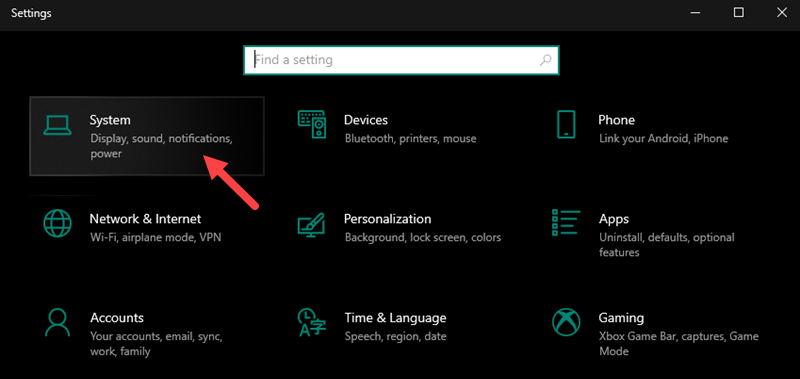
Step 3: Find Device Specifications
Select the About option in the left pane, and under the Device specifications section, find the system type:
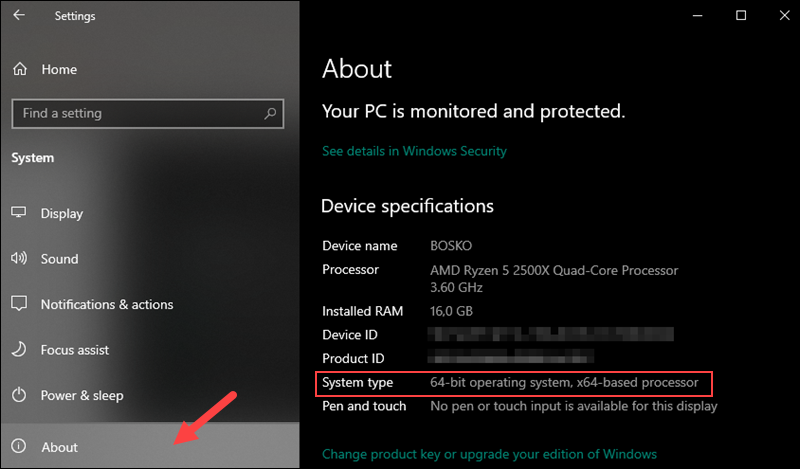
In the example above, the system is a 64-bit operating system with an x64-based processor.
Is x86 or x64 Better?
Although both x86 and x64 have advantages, x86 will eventually be used less or dropped entirely. Additionally, x64 is much faster, can allocate more RAM, and supports parallel processing via the 64-bit data bus, making it a better choice between the two architectures.
When choosing an OS, it is always better to install a 64-bit OS because it can run both 32-bit and 64-bit software. On the other hand, an x86-based OS runs only 32-bit software.
Overall, x64 is much more capable than x86, utilizing all installed RAM, providing more hard drive space, faster bus speeds, and overall better performance.
Conclusion
This article compared the x86 and x64 instruction set architectures, including their features, use cases, and limitations. Consider all the features of each ISA and choose the one best suited to your configuration.

